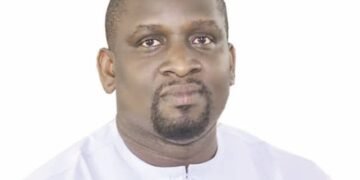By Charles Igwe
The Synod on Synodality at the Vatican stands out as a profoundly important event. It is a convergence of the prelates and other members of Christ’s faithful, where the ecclesiastical hierarchy grapples with the challenges of the modern age. Often considered a major workshop for church leaders and laypeople to collaborate for the betterment of the Catholic Church, this multiyear assembly is akin to a crucible where tradition and progress meld. It holds the potential to reshape the very bedrock of the institution, as it navigates the turbulent waters of contemporary society while staying true to its ancient roots. In an era of rapid change and shifting values, the Synod on Synodality emerges as a beacon of hope, demonstrating the Church’s willingness to engage with the complexities of the 21st century.
At its core, a synod is a gathering of bishops who convene periodically, and it serves as a vital mechanism for the Catholic Church to address and adapt to the ever-evolving landscape of faith and society. Traditionally, these synods have provided a platform for church leaders to delve into specific and pressing matters, whether they concern the intricacies of family life, the spiritual well-being of the youth, or theological quandaries. These gatherings have acted as crucibles where timeless doctrine meets the practical realities of the faithful.
However, the Synod on Synodality is different in its essence. It transcends the confines of a singular issue or topic and, instead, focuses on the very process of collaborative decision-making. This approach, “journeying together,” signifies a way to be Church. Rather than merely addressing individual concerns, it seeks to focus on how the Catholic hierarchy engages with its members, its clergy, and the world at large.
In an era characterized by rapid societal changes and a growing desire for inclusivity and transparency, the Synod on Synodality is emblematic of the Church’s willingness to adapt to the times. It reflects Pope Francis’s vision of a more collegial and inclusive institution, where the traditional hierarchy creates a room for a more participation in Church life. By scrutinizing not just what the Church believes but how it makes decisions and engages with its diverse flock, this synod is poised to set a precedent that could reshape the way the Catholic Church interacts with its followers and addresses the challenges of the modern world.
This unique approach, which sets the Synod on Synodality apart from its predecessors, commenced in 2021 with a bold initiative from the Vatican. Recognizing the need for broader and more inclusive perspectives, the Holy See embarked on a remarkable journey of engagement with local churches across the globe. This outreach effort sought input and feedback from the grassroot faithful, clergy, and church leaders alike. It was a process of listening, learning, and discerning the genuine concerns, aspirations, and challenges faced by Catholics in diverse cultural, social, and geographical contexts.
The result of this extensive canvassing was a series of comprehensive reports that distilled the collective voice of the faithful. These reports captured the heartbeat of the global Catholic community, articulating its hopes and uncertainties and its calls for a more responsive and compassionate Church. These reports, therefore, became the foundation upon which the Synod on Synodality would build its discussions and deliberations.
Commencing on October 4 and continuing until October 29, 2023, the Synod on Synodality holds the promise of being a significant moment in Pope Francis’s papacy. It offers him another opportunity to continue to champion for a more inclusive, merciful, and open Church.
One significant and historic innovation in the Synod on Synodality is the deliberate inclusion of laypeople, including women, with full voting rights. With 365 participants, including bishops and 54 women having voting rights, the synod represents a pivotal shift in the Church’s approach to decision-making and governance. The process will be critical in determining the future direction of the Catholic Church, with some hoping for reforms related to priestly celibacy, the role of women, and the treatment of divorced and remarried Catholics. While it’s important to note that this inclusion doesn’t democratize the Church, it undeniably marks a profound step towards a more inclusive and participatory institution.
The decision to grant laypeople and women voting rights acknowledges the vital role they play within the Church and recognizes their equal stake in its future. It goes beyond token representation, signifying a genuine commitment to fostering a diverse range of voices within the Church’s decision-making processes. This diversity extends beyond geographical or cultural differences; it encompasses a rich fabric of lived experiences, perspectives, and insights.
By allowing laypeople, who are at the forefront of the Church’s daily life, and women, who have long sought a more influential role, to actively participate and vote in the Synod, Pope Francis sends a clear message of openness and willingness to engage with the realities of the modern world. It’s a recognition that the Church is at its most potent when it listens to and learns from the very people it serves. While the hierarchical structure of the Church remains intact, this move signals a commitment to greater collegiality and a more inclusive decision-making process.
The Synod on Synodality may prove to be a watershed moment, reflecting a shift towards a more inclusive Church that better responds to the evolving needs of its faithful. Its significance extends far beyond the Vatican’s walls, resonating with Catholics worldwide and anyone interested in the future of this ancient institution.
















































